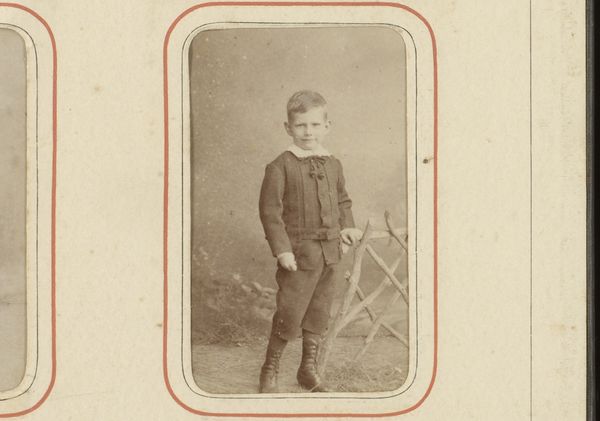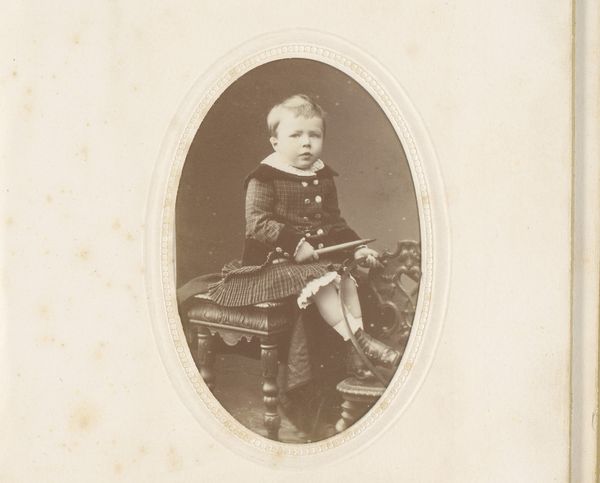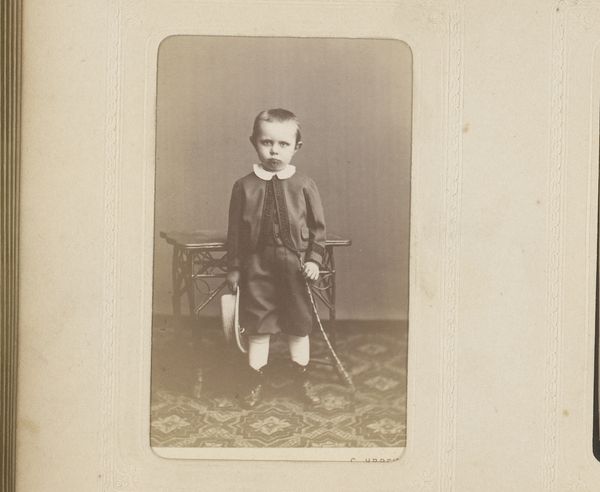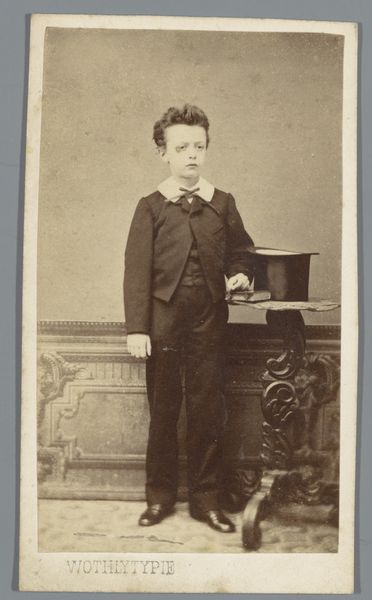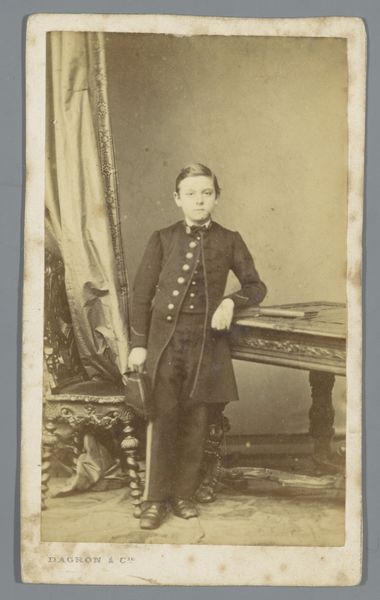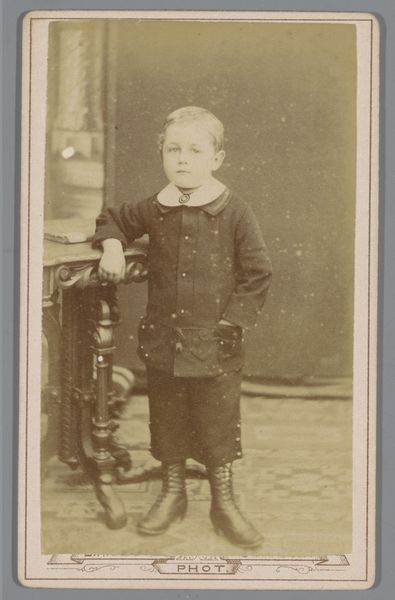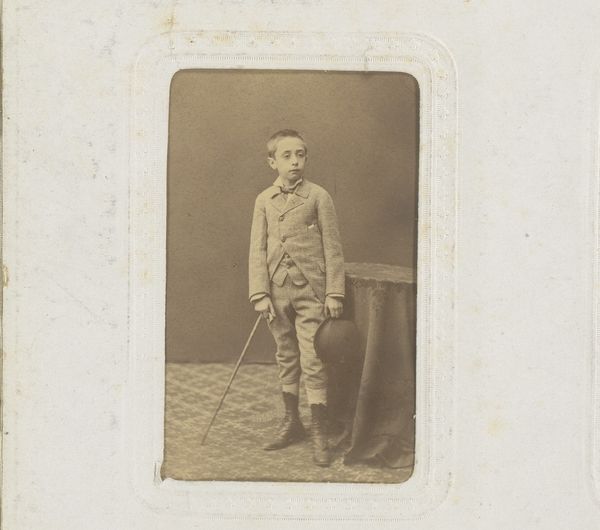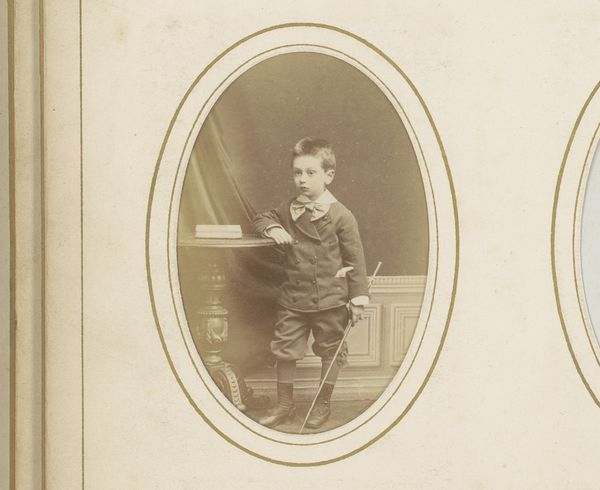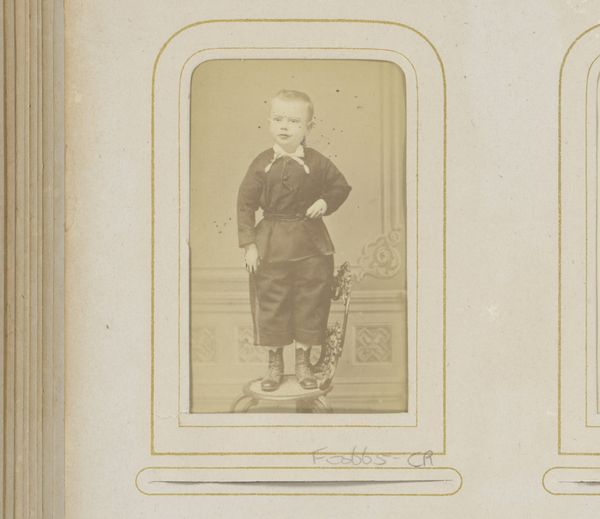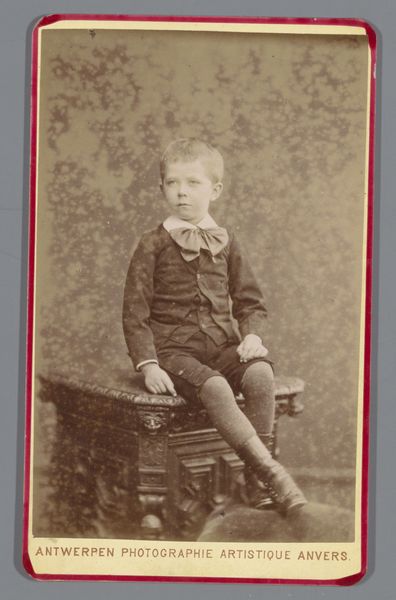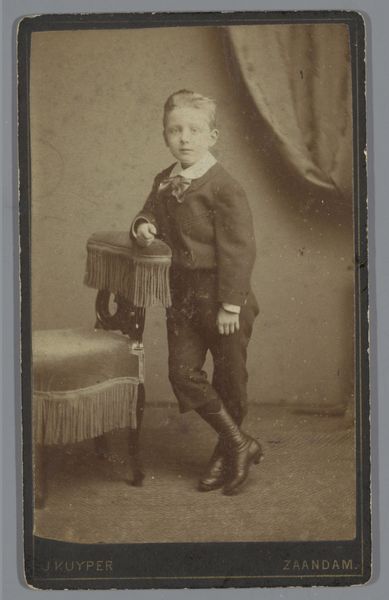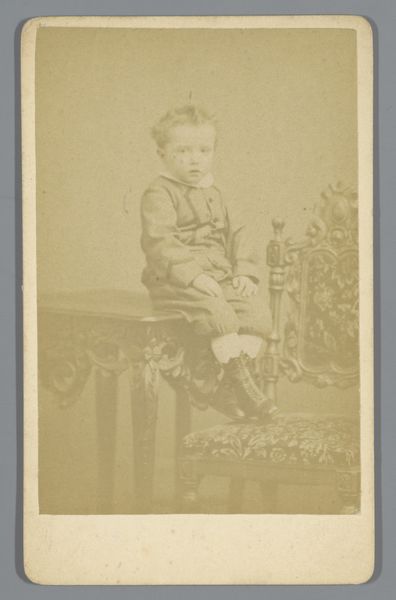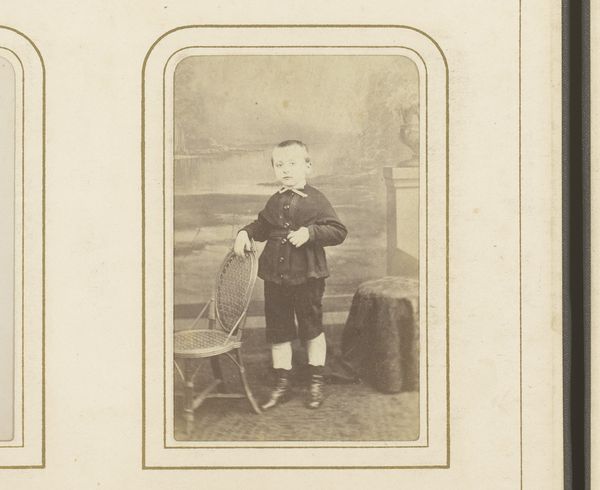
#
aged paper
#
photo restoration
#
parchment
#
old engraving style
#
archive photography
#
historical photography
#
old-timey
#
yellow element
#
19th century
#
golden font
Dimensions: height 82 mm, width 52 mm
Copyright: Rijks Museum: Open Domain
Curator: Here we have a photograph titled "Portret van een jongen, staand bij een stoel met hoed," or "Portrait of a boy, standing by a chair with hat" in English, believed to have been created sometime between 1850 and 1893 by Prosper Bevierre. Editor: It’s evocative, like a tiny, serious general. Look at the stiff posture, the ornate little uniform… I can almost smell the musty scent of a long-closed parlor. Curator: Indeed. Child portraiture became increasingly popular in the mid-19th century, reflecting changing social attitudes towards childhood and family. Photography offered a new way to capture these fleeting moments, reinforcing bourgeois values of domesticity and remembrance. Editor: Remembrance... it feels less like celebrating childhood, and more like embalming it. That chair, almost comically large for him, becomes a throne of expectation. What future was ordained for this child in that rigid stance, captured forever by the photographer’s lens? It makes me wonder what he truly wanted. Curator: And yet, these portraits also served a vital social function. In an era with high mortality rates, particularly amongst children, photographic portraits served as lasting memorials. Photography allowed families to create a tangible link to lost loved ones. Editor: Absolutely. He stares out from sepia-toned edges, challenging time. I see the vulnerability beneath the clothes – the story beneath the pose. It makes you think that even when people try to make portraits serve power or memory, it is humanity peeking through. Curator: Ultimately, the photograph operates on multiple levels: as a memento mori, a status symbol, and as a carefully constructed performance for the camera that we, as modern viewers, can't help but deconstruct and analyze. Editor: So we have these fragments, remnants of something bigger. A moment. And that serious small soldier, his forgotten hat waiting obediently nearby...they make this old image so strangely vivid and moving for me.
Comments
No comments
Be the first to comment and join the conversation on the ultimate creative platform.
